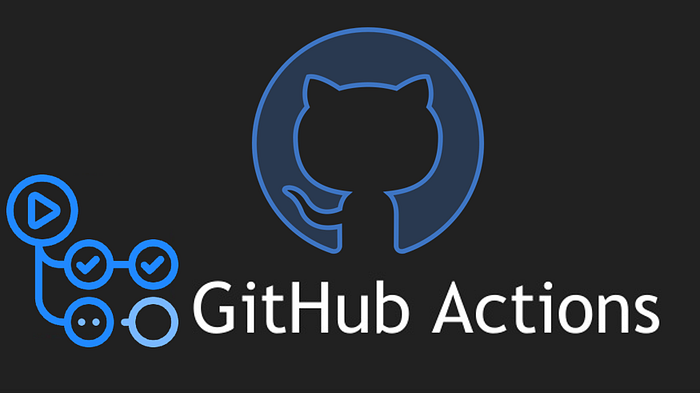In the fast-evolving world of software development, automation has become a crucial element for ensuring efficiency, reliability, and speed. GitHub Actions is one such tool that empowers developers to automate workflows directly within their GitHub repositories. Whether it’s for continuous integration (CI), continuous delivery (CD), or deploying your applications, GitHub Actions makes it seamless to automate these processes. In this article, we’ll dive into the basic concepts of GitHub Actions, helping you understand how to get started with automating your own workflows.

What is GitHub Actions?
GitHub Actions is a CI/CD platform that allows you to automate tasks like building, testing, and deploying code right from your GitHub repository. It enables you to define custom workflows that can be triggered by specific events, such as a code push, pull request, or even a manual trigger. The beauty of GitHub Actions is that it provides tight integration with GitHub, making it easy to automate nearly any aspect of your development cycle.
With GitHub Actions, you can streamline your software development process, ensuring that repetitive tasks are handled efficiently. Now, let’s explore the basic concepts that form the foundation of GitHub Actions.
Key Concepts of GitHub Actions
To effectively use GitHub Actions, it’s essential to understand a few fundamental concepts: workflows, jobs, steps, actions, and runners. Each of these plays a critical role in how automation is achieved.
1. Workflows
A workflow is a collection of jobs that define the automation process. It’s written in YAML syntax and stored in a .github/workflows directory in your repository. A workflow is triggered by events such as a push, pull request, or even on a schedule. You can create multiple workflows to handle different automation tasks in your project.
For example, you might have one workflow for running tests whenever new code is pushed and another workflow for deploying your application.
Here’s an example of a simple workflow:
name: CI Workflow
on: [push]
jobs:
build:
runs-on: ubuntu-latest
steps:
- name: Checkout code
uses: actions/checkout@v2
- name: Install dependencies
run: npm install
- name: Run tests
run: npm test2. Jobs
A job is a set of steps executed by a specific runner. Each job runs in its own virtual environment, and by default, jobs run in parallel unless specified otherwise. Jobs help in organizing tasks into logical groups within the workflow. You can also configure jobs to run sequentially if necessary, by setting job dependencies.
3. Steps
Steps are individual tasks executed within a job. They can be commands, scripts, or individual actions. Each step runs in the same virtual environment, which allows them to share information, such as environment variables or files, during execution.
For instance, in the example above, the build job consists of three steps:
- Checking out the code from the repository.
- Installing dependencies.
- Running tests.
4. Actions
Actions are the building blocks of workflows. They are reusable units of code that can be combined to perform complex automation tasks. GitHub provides many pre-built actions, and the community has contributed thousands more, covering a wide range of use cases. You can also create your own custom actions if needed.
For example, the action actions/checkout@v2 is a pre-built action that checks out the repository code so that subsequent steps can interact with it.
5. Runners
A runner is a server that executes the steps defined in your workflow. GitHub provides hosted runners that come pre-configured with environments like Ubuntu, Windows, or macOS. Alternatively, you can host your own runners for more control over the environment where your jobs are executed.
Hosted runners are a great option for most use cases, as they are fully managed by GitHub and come with many common tools pre-installed, such as Docker, Node.js, and Python.
Triggering Workflows
Workflows in GitHub Actions can be triggered by various events. Some common triggers include:
- push: Triggered when new code is pushed to the repository.
- pull_request: Runs when a pull request is opened or updated.
- schedule: Allows workflows to run at regular intervals using cron syntax.
For example, here’s a workflow that runs every day at midnight:
name: Scheduled Task
on:
schedule:
- cron: "0 0 * * *"
jobs:
daily-task:
runs-on: ubuntu-latest
steps:
- name: Run task
run: echo "This task runs every day at midnight"GitHub Actions simplifies the process of automating workflows within your repository. Some key benefits include:
- Ease of use: With the YAML configuration, setting up a workflow is quick and intuitive.
- Tight GitHub integration: You can automate almost any aspect of your GitHub repository.
- Scalability: Use multiple runners, run jobs in parallel, and scale your workflows as needed.
- Flexibility: Custom actions and reusable workflows make it easy to tailor automation to your specific needs.
Explore more detailed content and step-by-step guides on our YouTube channel:-
Conclusion
GitHub Actions is a powerful tool for automating your development process, from code testing to deployment. By understanding the basic concepts like workflows, jobs, steps, and actions, you can begin automating repetitive tasks and improving your overall productivity. The flexibility and ease of use make GitHub Actions an essential tool for developers and teams of all sizes.
Whether you’re just getting started with automation or looking to optimize your existing workflows, GitHub Actions provides the capabilities you need to streamline your development process.
Connect with Me:
- YouTube ► S3 CloudHub Channel
- Facebook ► S3 CloudHub Page
- Medium ► S3 CloudHub Blog
- Demo Reference ► GitHub Repository
- Blog ► S3 CloudHub Blogspot
- Dev ► S3 CloudHub on Dev.to

No comments:
Post a Comment